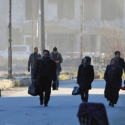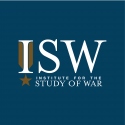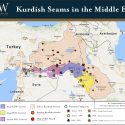New ISW Insight Series
Mar 16, 2017 - ISW PressISW's Insight Series: The Changing Geostrategic Landscape
ISW's Insight Series: The Changing Geostrategic Landscape

America’s Way Ahead in Syria: One Pager

The Institute for the Study of War (ISW) and the Critical Threats Project (CTP) at the American Enterprise Institute conducted an intensive multi-week planning exercise to frame, design, and evaluate potential courses of action that the United States could pursue to destroy the Islamic State of Iraq and al Sham (ISIS) and al Qaeda in Iraq and Syria

Syrian President Bashar al-Assad’s regime is neither sovereign nor a viable U.S. partner against ISIS and al-Qaeda. Russia and Iran have penetrated the Syrian Arab Army’s command-and-control authorities at all levels and propped up the force by providing the bulk of its offensive combat power. The pro-regime coalition cannot secure all of Syria and primarily serves as a vehicle for Moscow and Tehran’s regional power projection.

An open conflict will likely erupt imminently between Turkey and the U.S.-backed Syrian Democratic Forces (SDF) in the town of Manbij in Northern Syria.

The U.S. cannot drive a wedge between Russia and Iran in the near term. Tehran and Moscow share regional and global interests across the Middle East, North Africa, Caucasus, and Central Asia. Their common interests and overarching objective of expelling the U.S. from the Middle East will likely bind Iran and Russia together into an enduring partnership.

The U.S.-led coalition’s fight against ISIS in Syria is in jeopardy as Turkey threatens an offensive against the U.S.’s primary partner force on the ground, the Syrian Democratic Forces. Turkey has stated its intent to shift its focus from ISIS to the Syrian Kurds after the seizure of the ISIS-held town of al Bab in Northern Aleppo Province, which ISW forecasts is likely in the coming weeks.

Iranian military cooperation with Russia in Syria is dramatically increasing Tehran’s ability to plan and conduct complex conventional operations.
ISIS recaptured the historic city of Palmyra in Eastern Homs Province on December 11 following the withdrawal of pro-regime forces, marking the first seizure of a major urban center by ISIS in Iraq and Syria since ISIS

The U.S. Anti-ISIS Campaign has inadvertently emboldened select factions of Kurds in Iraq and Syria in a manner that threatens to exacerbate preexisting political and ethnic divisions, stoke regional conflict, and disrupt current momentum against ISIS in Iraq and Syria. The U.S. risks the long-term failure of its mission if the coalition proves unable to reduce tensions along these seams and rebalance its campaign to incorporate a wider variety of partner forces on the ground.